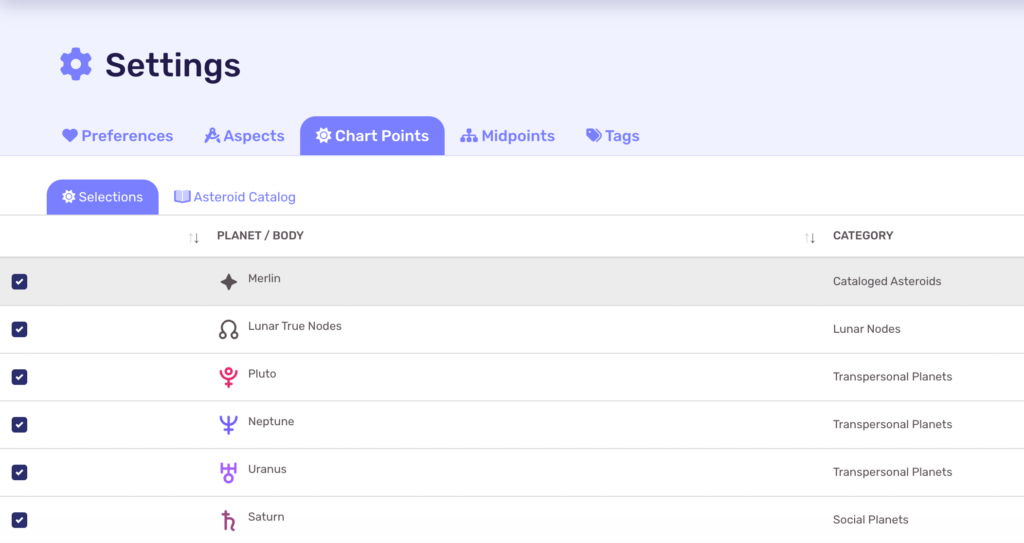LUNA supports the calculation of forty-two (42) chart points. You can select which chart points you want calculated for your charts:
- Login to your account if you’re not already logged in.
- [Desktop] Select your name from the upper-right of the screen or…
- [Mobile] Select the “more” link (3 dots) from the upper-right of the screen.
- A menu will display with a “Settings” link.
- Select that link to access your personal preferences.
- Select the “Chart Points” tab.
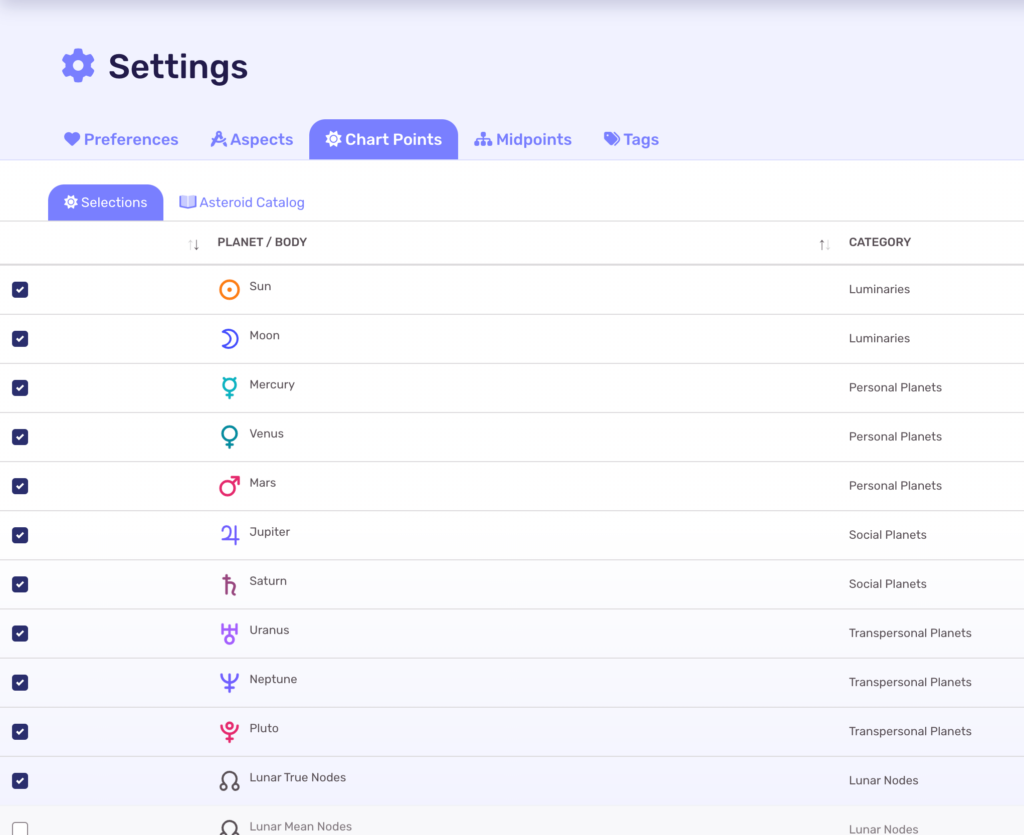
This is a sample of what the “Chart Points” settings screen looks like.
Show & Hide Chart Points
Chart points in the list that have a checkbox which is filled in will be calculated and shown on your charts. The other chart points will not display nor will they be calculated. Displayed chart points show first in the list while hidden (disabled) chart points show below.
When you are finished, select “Update Preferences” to save your changes.
Axis Points
LUNA provides one (1) chart point for any point that is part of a pair or axis. For instance, the Ascendant-Descendant axis can be shown or hidden by selecting that chart point.
LUNA will automatically calculate both ends of the axis and display them on charts.
Ascendant-Descendant
Note that in a quadrant-based house system such as Placidus and others, these axis points don’t display separately from the angles of the chart. However, enabling them in your settings allows LUNA to calculate aspects to these points.
When this point is turned off, LUNA will not calculate aspects to either the Ascendant or the Descendant.
If you’re using the 0° Aries system or the Whole Sign system, the Ascendant and Descendant will display as individual chart points just like the planets. They will still be 180° apart from each other although they won’t necessarily align with the heavy horizontal line that runs across the chart wheel.
Midheaven-IC
Note that in a quadrant-based house system such as Placidus and others, these axis points don’t display separately from the angles of the chart. However, enabling them in your settings allows LUNA to calculate aspects to these points.
When this point is turned off, LUNA will not calculate aspects to either the Midheaven or the IC.
If you’re using the 0° Aries system or the Whole Sign system, the Midheaven and IC will display as individual chart points just like the planets. They will still be 180° apart from each other although they won’t necessarily align with the heavy vertical line that runs across the chart wheel.
North & South Nodes
For all lunar and planetary nodes, LUNA will automatically display the opposite node when you select the nodal point for display.
For instance, if you select “Lunar True Nodes”, you will see both the north and south lunar nodes on your charts; and LUNA will calculate aspects to both of these chart points.
The same logic applies to the planetary nodes, although planetary nodes are not necessarily 180° apart from one another if you have selected to calculate them geocentrically.
Black Moon Lilith & Priapus
There is more than one (1) Lilith in astrology. However, LUNA uses the astronomical point known as the lunar apogee for Black Moon Lilith. The opposite point (the astronomical lunar perigee) is called Priapus. When viewed as a pair, the apogee and perigee are known as the lunar apsides.
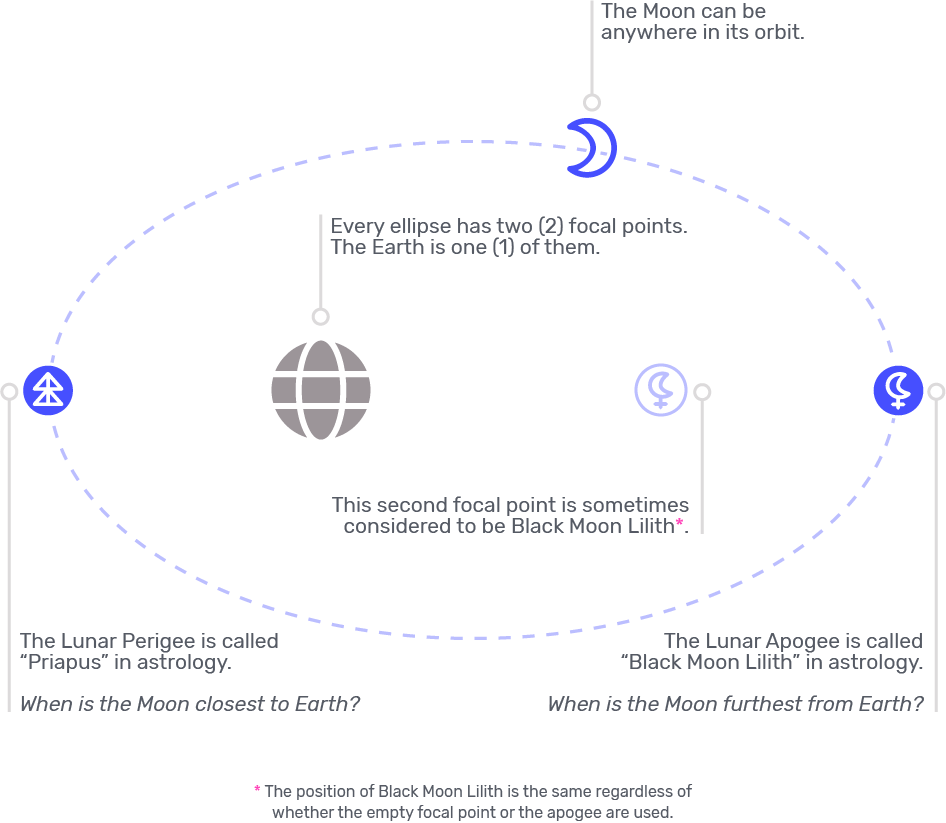
LUNA provides three (3) different calculation methods for Black Moon Lilith and Priapus:
- Mean
- Osculating
- Natural
Mean
This calculation method is the most common one used by astrologers. The mean calculation assumes an average rate of motion of the Moon, which allows for a deviation from the actual lunar apogee of up to five degrees (5º).
Osculating
This calculation method is sometimes called “True”, but is not in actuality a true calculation of the position of the lunar apsides. In fact, it can deviate from the actual apogee’s position by up to thirty degrees (30º). This is because it is a mathematical construct which assumes that the Moon’s orbit is an ellipse. However, the Moon’s orbit is too irregular to truly be considered an ellipse.
Natural
This is the least common calculation method and is therefore not easy to find in other astrology software. It can be referred to as the “interpolated apsides” although its creator (Dieter Koch) prefers to call it the “Natural Apsides”. The important point to note here is that this method does not necessarily calculate the apogee and perigee in exact opposition to each other.
Asteroid Catalog
LUNA supports adding any of the over 23,000 named asteroids, centaurs, dwarf planets and minor bodies to your charts for calculations. When viewing the chart points settings screen, you’ll see a tab for “Asteroid Catalog” which will open a screen that looks like the sample below.
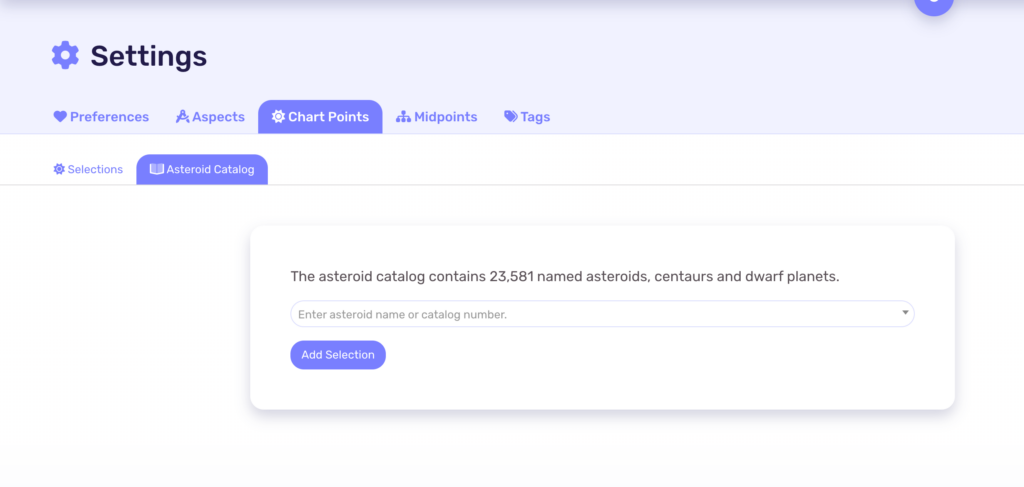
You can use this form to search for an asteroid by name or catalog number:
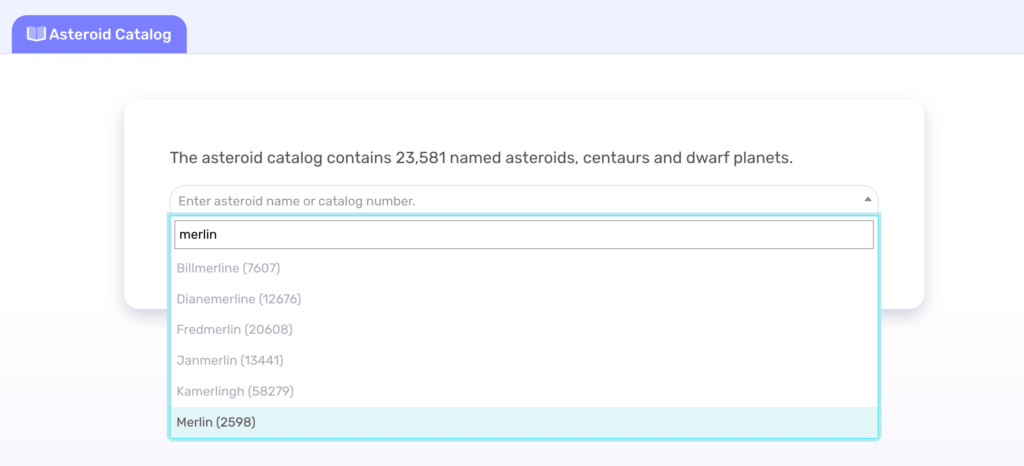
Once added, the asteroid will appear in your main chart points selections list; and they will also show on your charts just like other planets:
